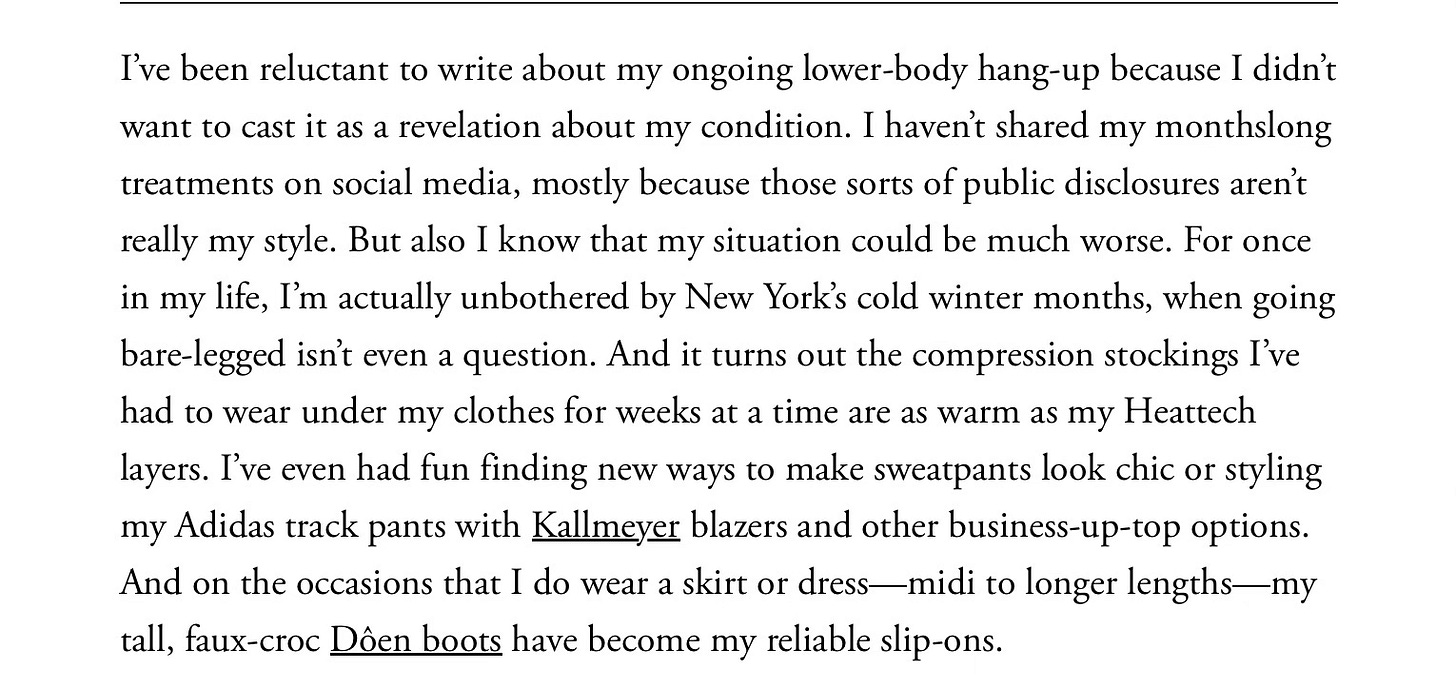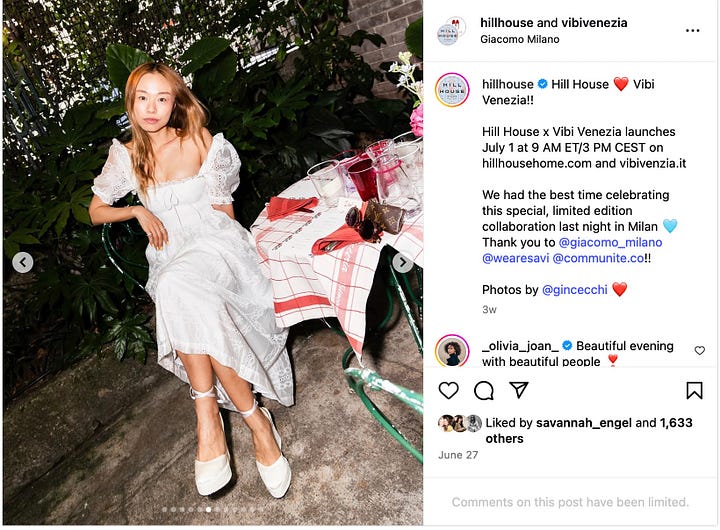An editor revised something I’d recently written:
We’ve dialed up the conversational tone and woven in more references to today’s zeitgeist—plus added a few keywords to give it an SEO boost. Take a peek and let me know if this lands for you.
I took a peek. The new version was extremely Gen. Z. And there’s nothing wrong with that, only I’m not Gen Z myself. I don’t talk, nor behave like someone born between 1997 and 2012, and it would just feel cringey to even try. (And while I get it, the SEO imperative can often infuriate me. I write for people, not for search engines.)
So no, the edit didn’t land. But it became a gift for how immediately and acutely it clarified how I want to write about fashion—and all the ways I don’t. Especially when I consider some of the other things I’ve written lately: a personal style essay influenced by a recent experience with my health and body; a fashion designer friend’s newest collection notes; and a message to a restaurateur that was later shared anonymously on his Instagram feed. That last one had nothing to do with fashion, but it shared something vital with the others: connection.
My personal essay definitely landed. Some commented that they could relate, others touched on their own experiences. A few friends said things like, “I could hear you reading it,” which, in this instance at least, was the greatest compliment. I felt seen, but not only that, I’d put something out there that let others feel seen, too. And somewhere in the space between my own experience and those we face more broadly was a very relevant conversation around getting dressed.

It felt really good (no better word than that!) to write my friend’s notes, most especially because of our relationship: I know him beyond just his profession, and I could see his fingerprints all over this collection. I wanted those context clues to come through in the notes, even if they were just below the surface. I was touched that he asked this favor in first place (and frankly the idea of letting him down terrified me), but his happiness with the final outcome meant that I got him.
And the note to the restaurateur on social media (which is now up to around 12k likes and nearly 300 comments)— it was something that compelled me enough to reach out in the first place, something that affected him enough to make public, and something relatable enough to evoke that kind of reaction. That kind of cause and effect is powerful stuff.
Each of these things reflect, in some way, what I mean to do when I write about fashion: to connect. Almost, almost always. Whether that shared connection comes by way of the subject or topic, or maybe I’m relating directly with my subject (if it’s a person) through conversation or an experience, the intention is to collapse the space between something we see from afar (like Fashion with a capital F), and something more up-close and personal.
How we relate to ourselves and make sense of the world around us, and how we process and digest that into the way we express ourselves in this world—when it comes to fashion, THAT is the thing!! Our relationships to ourselves and our bodies, and therefore the clothes we put on them, are constantly evolving. What’s driving those choices? That’s the zeitgeist I’m chasing down.
I’ll probably never write about first-date outfits without also mining the feelings and emotions around a first date. Or what it’s like dating in New York in your 40s, which looks wildly different from dating in one’s 20s, for that matter. If I’m exploring the enduring appeal of nap dresses, it’s to dig into something more psychological than the obvious answer that they’re comfortable and almost universally lattering. Like the premise that there’s something romantic and faraway-feeling about them that conjures up sweaty-bosomed milkmaids and lusty prairie women— ie, fashion parallels we don’t often call attention to, because we don’t think modern, independent women should really find these archetypes aspirational. But I suppose that only makes the dress feel like an even safer expression of these desires, right? These are the kinds of conversations I want to have when I write.


There’s a lot of noise out there. There’s also a lot of genuinely good, thought-provoking writing that’s already out there. There’s a brutal amount of inhumanity in the world right now. What I write isn’t going to save lives, but writing anything about it at all needs to feel worthwhile. It has to be sincere. It may not be the right fit for everyone, but that’s what makes it human.

